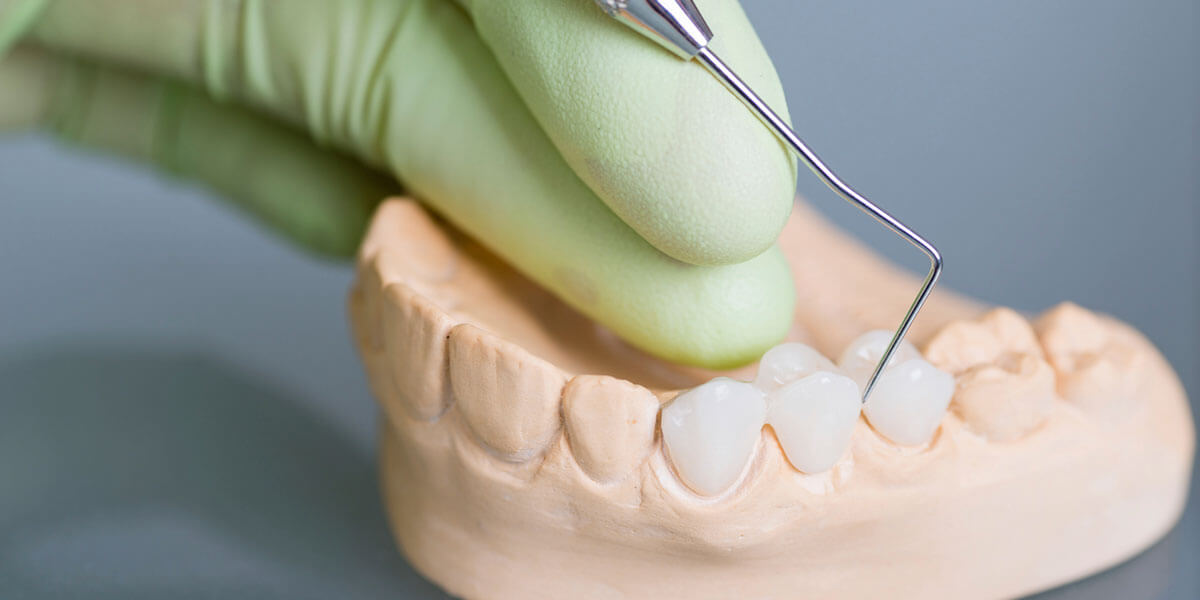Dental Bridges

What is the purpose of teeth?
Teeth have many purposes. Mainly, you use your teeth to chew food and speak properly. In addition to supporting proper chewing, teeth align with the lips and tongue to help form words by controlling the movement of air flow out of the mouth and are therefore necessary to maintain proper speech. Your teeth are important for digestion because digestion begins in the mouth with the teeth tearing, cutting, mashing, and grinding the food you eat. Teeth keep other teeth in alignment in the jaw and they also provide structural support for muscles in the face.
What happens when you lose a permanent tooth?
Imagine a brick wall where a brick is missing, and the bricks around the hole slowly fall into the space. The entire wall eventually becomes unstable. The same thing happens with missing teeth. The space created by the loss of a tooth causes the adjacent teeth to drift out of position which alters your bite. Left untreated, that tooth gap changes the ability to chew effectively, articulate clearly, and causes the facial muscles to fall into the empty space creating a hollowing out of the cheeks.
What is a dental bridge?
A dental bridge is a piece of tooth-colored porcelain that is used to replace one or more missing teeth. It is a “bridge” that spans the empty space where the teeth are missing. A bridge is anchored on either side of the space with full coverage porcelain crowns attached to your natural teeth. Those teeth are called abutment teeth and support the false tooth (pontic) located between them.
A dental bridge is fixed in the mouth and is not removable. Dental bridges are durable and can last about 20 years with good oral hygiene.
Why get a dental bridge?
A dental bridge offers cosmetic and functional improvements. Cosmetic improvement comes from filling in the empty space left behind after a tooth is lost to gum disease, a root infection, severe decay, or trauma. The upfront cost of a bridge is comparable to that of a dental implant, however the benefit is that a bridge can be completed and delivered much quicker than an implant. Typical turnaround time for a bridge is only 2-3 weeks. A bridge offers functional improvement by restoring occlusion, healthy chewing function, and speech.
What are the advantages and disadvantages of a dental bridge?
The crowns on the abutment teeth and the pontic can be made to match in color, shape and size with the rest of the teeth. The bridge subsequently restores broken down abutment teeth by crowning them and reinforcing them.
Disadvantages include difficulty cleaning around the abutment teeth and under the pontic which requires a commitment to keep the bridge clean to prevent decay and gum disease. Additionally, if the abutment teeth are strong and healthy, they would need to be unnecessarily cut down and prepared for crowns to make room for the bridge. This is a more aggressive and unnecessary treatment that damages perfectly ‘good’ teeth.
Who is a good candidate for a dental bridge?
A good candidate is someone who does not have bone loss from periodontal disease; and is committed to good oral hygiene. If you have gum disease and bone loss, your teeth and bone may not be strong enough to support a bridge and a bridge could end up causing pain, loose teeth and the need for the teeth to be extracted down the road.
When you have a missing tooth, and even before you lose a tooth, call Dr. Trombetta to schedule a consultation. She can guide you in choosing how to best proceed with replacing missing teeth.
